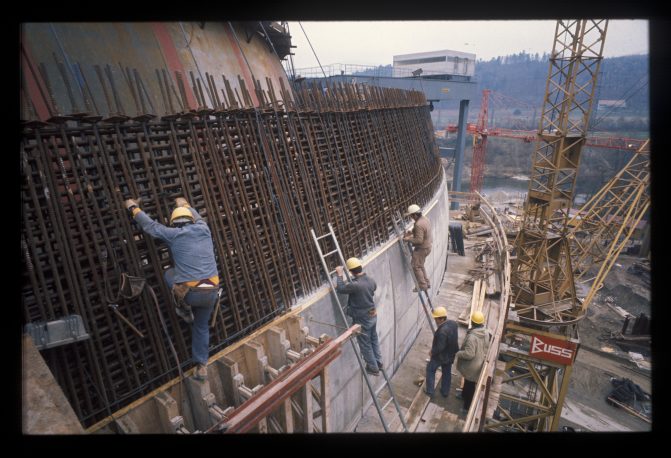Series of articles on barriers 6/6: The containment holds radioactive substances in the reactor building
The reactor pressure vessel is enclosed by the containment as the third barrier. This consists of a steel primary containment and a concrete secondary containment.
The containment consists of a primary and secondary containment. The primary containment, constructed from solid, roughly 4-centimetre-thick, and air-tight welded steel completely encases the reactor pressure vessel (RPV) and is largely air-tight.
During power operation, the primary containment can only be accessed via pressure- and gas-tight air locks, if at all. These air locks have two doors, which are closed against one another so that a door can only ever be opened once the other is closed and pressure compensation is complete. Besides the operational personnel locks, emergency locks also exist in case of emergencies as well as material locks for bringing in material.
Added safety with vacuum
The secondary containment encloses the primary containment in a solid concrete wall. It is usually a confinement. A confinement ensures that harmful substances are retained by way of a permanent vacuum. The vacuum guarantees that, in case of a leak, air would penetrate from the outside in, not the other way around.
Filter systems help in the event of a serious incident with increased containment pressure: these filter systems allow the power plant operator to release gases from the containment atmosphere in order to protect the containment from an overpressure failure. The filtered pressure relief would retain 99 percent of the radioactive aerosols in the nuclear power plant.
Safety and security
The containment has a double protective function. Besides protecting the outside world from radioactive substances and radiation, the steel and concrete walls also protect the reactor from external influences, such as explosions or a plane crash.

This is the last of six articles on the topic of barriers for trapping radioactive substances. The first describes the barrier principle, while articles 2 to 6 describe the various barriers.

